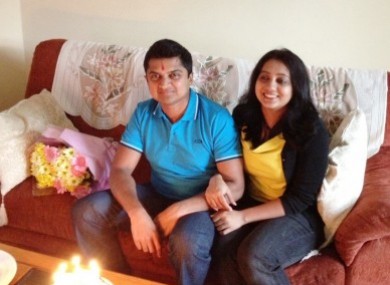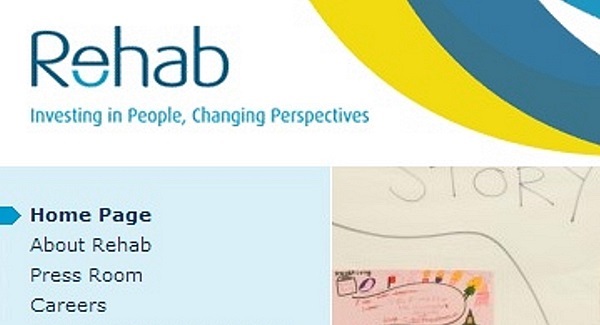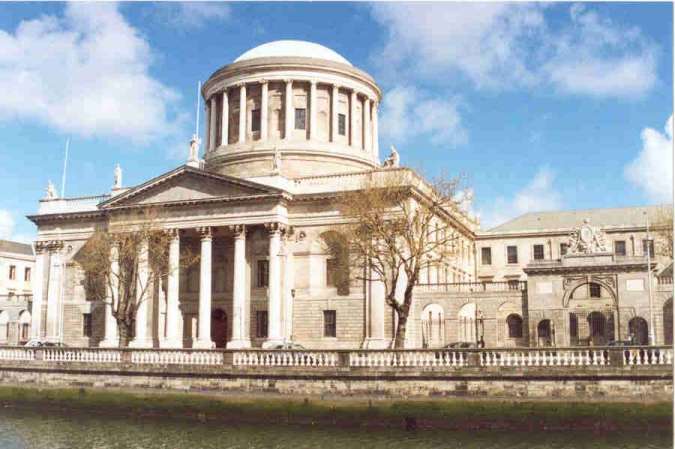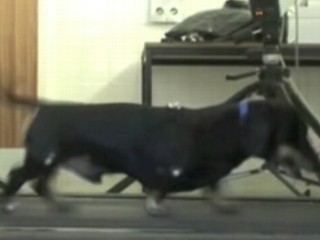Galway hospital consultants now removed from Savita Halappanavar death inquiry team
Taoiseach Enda Kenny has told the Dáil today Tuesday afternoon that no consultants from University Hospital Galway will now form part of the team appointed by the HSE to investigate the death of Savita Halappanavar.
“The three consultants who were named will not now be part of the investigation, and, therefore, under the chairmanship of the Professor (Sabaratnam Arulkumaran), different personnel who are competent, who are experienced, who have no connection with University Hospital Galway will be appointed to conduct the investigation,” Mr Kenny said.
The news comes hours after the Prof Arulkumaran sought a face-to-face meeting with Savita’s husband, Praveen Halappanavar.
That development came after the solicitor for the Halappanavar family said Mr Halappanavar had no faith in the HSE inquiry into her death and would not cooperate with it.
Ms Halappanavar died following a miscarriage at Galway University Hospital on 28 October.
Speaking on RTÉ’s Today with Pat Kenny, Gerard O’Donnell said Mr Halappanavar would not consent to have Savita’s records looked at by the HSE inquiry team.
Mr O’Donnell said Mr Halappanavar would be essential to any inquiry as he was a very important witness.
He said Mr Halappanavar wanted an independent inquiry.
This would see oral hearings held in public, a full discovery of records and witnesses called in under oath and cross examined in public.
Mr O’Donnell said: “Any inquiry conducted by the HSE does not meet with his approval. He has no faith in the HSE.
“It’s important to remember that he lost his wife while under the care of the HSE,” he added.
“He (Praveen) feels that anybody who is appointed by the HSE or paid for by the HSE to conduct an inquiry into his wife’s death won’t meet the criteria that we would advise him as lawyers of getting to the truth,” Mr O’Donnell said.
Mr O’Donnell said the removal of the three consultants from the Galway hospital from the inquiry team would not be enough to meet Mr Halappanavar’s concerns.
Mr Halappanavar returned to Galway from India on Sunday.
Mr Halappanavar’s solicitor wrote to Minister for Health James Reilly seeking a full public inquiry into the death.
He also said he does not believe there would have been any inquiry other than an inquest, if there had not been public pressure.
He said the scale of the media attention has been a shock for his wife’s family, who were overwhelmed by the numbers involved in Saturday’s vigil in Dublin.
Savita’s Halappanavar husband Praven has no faith in the HSE & wants a public inquiry


The husband of the late Savita Halappanavar wants an independent public inquiry established into her death.
Solicitor Gerard O’Donnell, who represents Praveen Halappanavar, said the family is very concerned about the way Savita was treated at University College Hospital Galway and “they want a full public inquiry to be held into the circumstances surrounding her death”.
Speaking on RTÉ Radio this morning, Mr O’Donnell said Mr Halappanavar had no faith in the HSE.
“He feels that anybody who is appointed by the HSE and paid for by the HSE to conduct and inquiry into his wife’s death won’t meet the criteria that we would advise him as lawyers of getting to the truth,” he said.
“Evidence won’t be taken under oath, it won’t be cross examined so I wouldn’t be satisfied with that and neither would our client.
“I think it is inappropriate that anybody who was involved should conduct an inquiry into their own actions. The HSE are very much at the centre of this and they are purporting to inquire into their own actions or the actions of their staff…we want the evidence taken in public and people tested by way of cross examination.”
Minister for Education Ruairí Quinn said this morning that the inquiry should be carried out by the people directly involved, along with outside experts.
“If a subsequent inquiry is necessary then that will be for people best placed to make that judgement to make that decision,” he said.
“In the first instance the people directly involved, along with outside experts, should look at what has happened.”
In an interview with The Irish Times last night, Mr Halappanavar said he would request through his solicitor that Prof John J Morrison, a consultant in obstetrics and gynaecology; Dr Catherine Fleming, consultant in infectious diseases; and Dr Brian Harte, consultant in anaesthesia and intensive care at the hospital, be removed from the inquiry.
The HSE announced details of the membership of the inquiry team at a press conference in Dublin yesterday.
Ms Halappanavar died at the Galway hospital on October 28th of septicaemia seven days after she presented with back pain. She had been 17 weeks pregnant and her husband says she asked repeatedly for a termination over a three-day period but was refused as there was a foetal heartbeat present.
Mr Halappanavar arrived back in Ireland from India on Sunday and met his solicitor in Galway yesterday to discuss the draft terms of reference for the independent inquiry.
Asked what he wanted from the inquiry, he said: “The truth to come out. As long as it is a fully independent inquiry so that the truth will come out. It does bother me that there are people from Galway hospital on the inquiry. I would prefer no Galway people on the inquiry. I will basically request that there be no-one from Galway on it.”
The inquiry team has seven members. Its chairman, Prof Sir Sabaratnam Arulkumaran, head of obstetrics and gynaecology at St George’s Hospital, University of London, said it was important to have representatives from Galway University Hospital on it to allow the panel to compare the guidelines in use there with the national and international guidelines.
He said the three consultants from Galway on the inquiry team had not been involved in the care of Ms Halappanavar.
“The main reason to have internal people involved is not for them to give specific directions but to find out about their standard practice,” he said.
The HSE said the inquiry would seek to establish the facts surrounding the death of Ms Halappanavar, to identify any contributory factors, draw conclusions and make recommendations. It said Galway University Hospital had committed to co-operating fully.
Mr Halappanavar also said there were five members of medical staff, as well as a family friend, present in the room with him and Savita when they were told on Tuesday, October 23rd that she could not have a termination of the pregnancy she was miscarrying because “this is a Catholic country”.
Mr Halappanavar also said he believed no inquiry would have been established if his wife’s death had not been brought to public attention.
“I was in India for nearly two weeks and I never heard from the hospital . . . So I had to see people became aware . . . I don’t think there would be any inquiry if there was not the public pressure. I think there would have been an inquest and no one would have known this happened. It is a pity because I thought Ireland would care more for someone so young who died. That let me down. I was not happy about that.”
Asked whether Ms Halappanavar’s parents would come to Ireland for the inquiry or inquest, he said if her father was not “convinced with the investigation” he was “very keen to come over”.
“The law has to change” Maybe Savita Halappanavar was born to change the laws in Ireland?
Minister’s plan to phase out charity lotteries challenged by High Court


A High Court challenge has been brought to the Minister for Justice’s decision to phase out and ultimately abolish funding for private charities which run lotteries.
The Rehab Group and Rehab Lotteries Ltd claim the decision by Alan Shatter last month to phase out funding to private charitable lotteries under the Charitable Lotteries Scheme (CLS) damages their ability to help those with disabilities.
The scheme was set up in the mid-1990s to compensate private charities for the advantage the National Lottery had over them.
Rehab is the largest beneficiary of the scheme and claims it will suffer the “greatest adverse impact” from its abolition. Charities received €6 million under the scheme in 2011, of which €4.4 million went to Rehab, which operates lotteries and scratch card games.
Mr Justice Michael Peart yesterday granted leave to bring the judicial review proceedings.
Paul Gardiner SC said Rehab’s share of the lotteries market was 25 per cent before the National Lottery began in 1987 and was now 1 per cent. The money paid to Rehab under the CLS scheme came from the National Lottery and not from Government funds, he added.
Paralysed dog Jasper walks again after successful nose cell transplant


May Hay, a dog lover, used to cart her 10-year-old dachshund, Jasper,around in a trolley because his short hind legs were paralysed after he was hit by a car.
But after researchers took some cells from the dog’s nose — that’s right, his nose — and implanted them in his injured spine as part of a new study, Jasper could walk again.
“Now, he whizzes around the house and garden and is able to keep up with the other dogs,” Hay told BBC. “It’s wonderful.”
Jasper was one of 34 dogs with paralysed hind legs to participate in a randomized, double-blind study at Cambridge University in England. The results have now been published in Brain, a neurology journal. Researchers first collected olfactory “ensheathing” cells from the dogs’ noses, cultured them in Petri dishes for three to five weeks and then injected them into the dogs’ spines.
Researchers assessed the dogs’ mobility on treadmills before and after treatment, discovering that the cells didn’t restore communication between the brain and the hind legs, but somehow restored mobility and coordination to the legs.
The researchers concede they’re not sure exactly why they had the success that they did.
“For those dogs that had the cells, something about having those cells in their spinal cord made them walk better, a little better, but not as if they were never injured,” said spinal cord injury researcher Naomi Kleitman, vice president of research at the Craig H. Nielsen Foundation, who was not involved in the study. “It’s a phenomenon, and we need to learn more about how this can happen.”
The olfactory ensheathing cells are thought to be special because they communicate between the central and peripheral nervous systems, allowing smell signals to travel directly to the brain, Kleitman said.
They’re also known to regenerate, unlike other cells in the central nervous system.
In a video shot before his spinal injection, Jasper walked on the treadmill using only his front legs as his back legs hung limply from a harness. Three months after the treatment, researchers videotaped him walking on all four legs, supported by a harness. The final video was shot six months after treatment, and shows Jasper walking without the harness, stumbling only occasionally. (His tail, of course, never stops wagging.)
But Jasper was fortunate. Many of the dogs had increased automatic function only on a treadmill when they were supported by a harness. None of the dogs that received the nose cells had any adverse health effects.
“It’s very difficult to know what this means without the ability to go in and look at the spinal cord histology and see what these transplants managed to do,” said Edward Hall, a professor at the University of Kentucky Spinal Cord and Brain Injury Research Center. Since the study subjects are pets, researchers can’t kill them and perform autopsies to determine exactly how the nose cells worked in the spinal column.
About 200,000 people in the United States are currently living with spinal cord injury, according to the Centers for Disease Control and Prevention. There are between 12,000 to 20,000 new spinal injury patients each year.
Co-author Robin Franklin said the study is the first to show that the nose cells can repair severely damaged spinal cords, bringing back front-hind leg coordination.
Researchers are still a long way from restoring spinal function in humans, researcher Geoffrey Raisman, chair of Neural Regeneration at University College London, told the BBC. Raisman discovered olfactory ensheathing cells in 1985.
“This is not a cure for spinal cord injury in humans — that could still be a long way off,” Raisman said. “But this is the most encouraging advance for some years and is a significant step on the road toward it.”
A big mistake to sink axe into the budget’s tax relief on pensions


The pensions industry can be forgiven for feeling a little paranoid given recent events.
The last few weeks have seen the publication of a couple of not very flattering reports about pensions. First the Department of Social Protection released a report on pension charges carried out by PricewaterhouseCoopers. It looked at both the transparency and reasonableness of pension charges and concluded that there is a “a wide variation in charges”.
However, the key factoid to emerge from the report, and highlighted in the department’s press release, was the startling revelation that someone who accumulates a pension fund of €400,000 could, under certain circumstances, end up paying over €120,000 in fees.
Then last week saw the publication of a study by Gerard Hughes of the TCD Pension Policy Research Group under the umbrella of the Economic and Social Research Institute. He looked at 48 large companies and found that 45 per cent of them offered guaranteed pensions based on final salaries to executive directors, while only 8 per cent of them offered such generous schemes to the rank and file.
The combined import of the two reports would appear to be that the private pension system – which is generously supported by the taxpayer via tax breaks on contributions – has been hijacked by an evil axis of an industry hell-bent on self-enrichment and its fat cat bosses.
The timing of the reports may just be coincidental but it amounts to some very helpful mood music for a government on the verge of yet another budget day smash-and-grab raid on private pensions .
The industry seems to have all but put its hands up at this stage, with the chief executive of the Irish Association of Pensions Funds, Jerry Moriarty, telling this paper last week a cap on tax relief on contributions that exceed what is needed to deliver a €60,000 pension is “the least worst option” of the various measures being trailed ahead of the budget.
Irreparable harm
It is important – amid all this pragmatism – not to lose sight of the fact that the the Government’s ever-clumsier efforts to try and squeeze money out of pensions risks doing irreparable harm.
Short-term thinking is unavoidable when the national books don’t balance and cuts have to be made. Five years into the crisis, we are at the “hard choices” stage. Public-sector wages remain off the table so it’s coming down to choices like hospital beds or tax relief on pensions.
It is obvious that tax relief for pension contributions is going to lose out, although the Government may have miscalculated the backlash from middle-class voters once they see the impact of the changes on their take-home pay.
What is harder to justify is the lack of any real sign the Government is interested in innovative alternatives or measures to try and alleviate the long-term consequences for pension provision of short-term expediency.
One such idea that has been floating around but does not seem to have gained much support is to match any reductions in the tax relief on contributions with some sort of tax credit on payments. A proposal along these lines would be tax-neutral in the long term for the contributor but the State would be getting the tax now rather than when the pension is paid.
The benefit for the pension scheme member is that the impact on their retirement income of accruing a smaller pension pot is offset by paying less tax on the retirement income.
There are various other ideas in the ether of equal or greater complexity. None of them could be easily implemented at the best of times, never mind by a badly stretched public administration in the midst of a chronic fiscal crisis.
It would be prudent then to assume the changes in tax relief on pension contributions in the budget will probably not be mitigated in any way. This will damage people’s faith in private pensions, which has already taken quite a battering as a result of poor market returns and various measures brought in by the Government in the last few years to reduce reliefs and raise revenues, the most significant being the 0.06 per cent levy on assets.
The great fear must be that if we continue in this vein, the money which would normally have gone into pensions to avail of tax relief – and ultimately be taxed on the way out – will now be channelled into other vehicles, possibly avoiding tax entirely. Anyone remember Ansbacher?
Atmospheric Greenhouse gases hits new record high for 2011


The WMO and Noaa operate monitoring stations around the world
Greenhouse gases in the atmosphere hit a new record high in 2011, the World Meteorological Organization has said.
In its annual Greenhouse Gas Bulletin released on Tuesday, the organisation said that carbon dioxide levels reached 391 parts per million in 2011.
The report estimates that carbon dioxide accounts for 85% of the “radiative forcing” that leads to global temperature rises.
Other potent greenhouse gases such as methane also reached record highs.
The carbon dioxide levels appear to have been rising at a level of two parts per million each year for the last 10 years – with the latest measure being 40% higher than those at the start of the industrial revolution.
The WMO estimates that 375 billion tonnes of carbon have been released into the atmosphere since 1750, and that about half of that amount is still present in the atmosphere.
“These billions of tonnes of additional carbon dioxide in our atmosphere will remain there for centuries, causing our planet to warm further and impacting on all aspects of life on Earth,” said WMO Secretary-General Michel Jarraud.
“Future emissions will only compound the situation.”
US weather agency the National Oceanographic and Atmospheric Administration (NOAA) contributed to the bulletin with their Annual Greenhouse Gas Index, which indicated that between 1990 and 2011, carbon dioxide’s role in the radiative forcing that leads to warming had increased by 30%.
Levels of methane, a more potent greenhouse gas, hit a new record at 1,813 parts per billion – more than two-and-a-half times the pre-industrial level.
Concentrations of nitrous oxide, estimated to be nearly 300 times more potent than carbon dioxide, rose slightly to a record 324 parts per billion.
Mr Jarraud pointed out that until now, “carbon sinks” such as the oceans had reclaimed half of all atmospheric carbon dioxide, but that pattern would not necessarily continue.
“We have already seen that the oceans are becoming more acidic as a result of the carbon dioxide uptake, with potential repercussions for the underwater food chain and coral reefs,” he said.
“There are many additional interactions between greenhouse gases, Earth’s biosphere and oceans, and we need to boost our monitoring capability and scientific knowledge in order to better understand these.

No comments:
Post a Comment